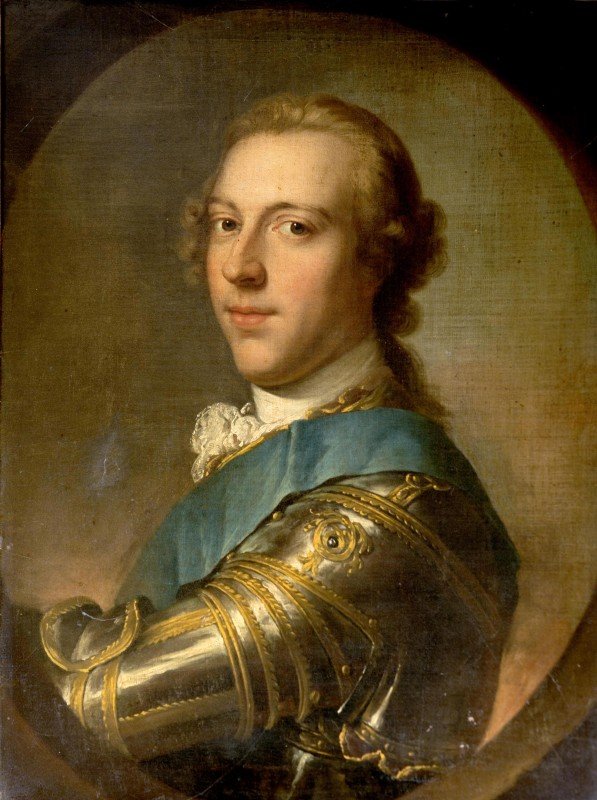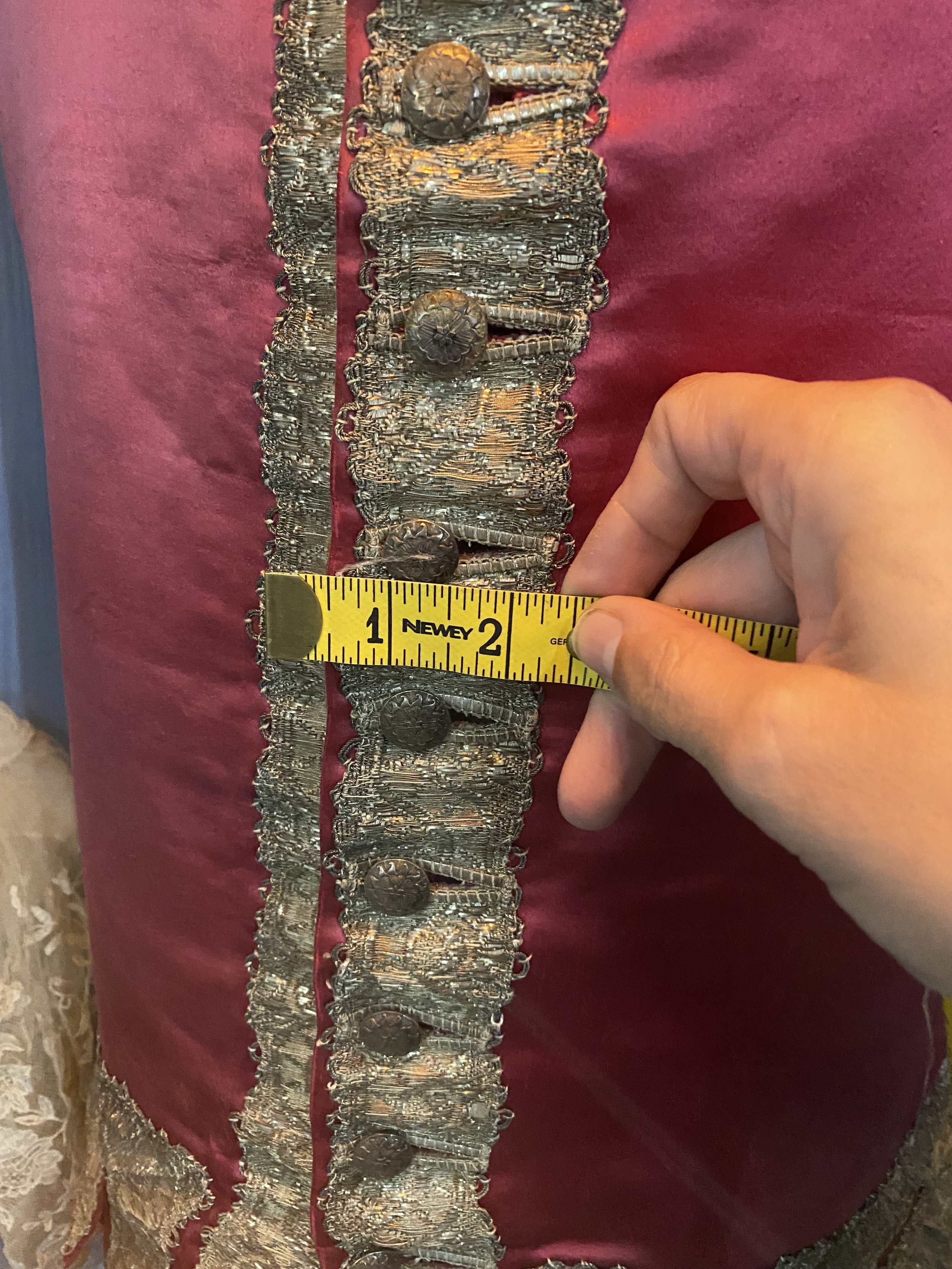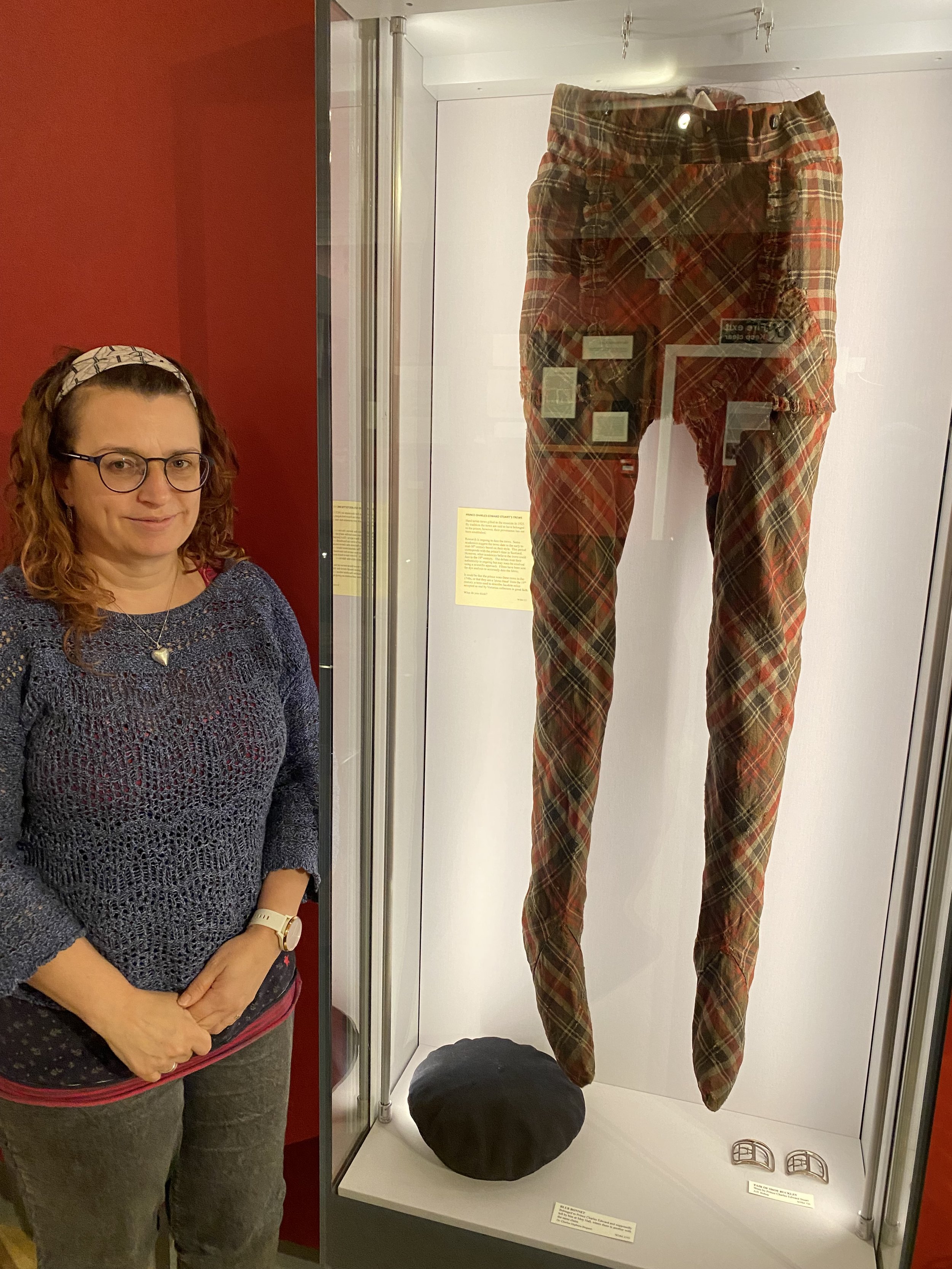
Threads of history: Rediscovering
Bonnie Prince Charlie
When we think of historical figures, we often imagine portraits, letters, or battlefields—but sometimes, the most personal insights come from the clothes they wore. In the Threads of History: Rediscovering Bonnie Prince Charlie project, we’re taking a fresh approach to historical research by quite literally measuring the past—using bespoke garments to uncover the physical dimensions of those who wore them.
This innovative study, created by Jo Watson, founder and CEO of Làmhan, combines the artistry of historical tailoring with the intrigue of Scottish history. And at its heart is a single, extraordinary waistcoat.
A Waistcoat with Provenance
On the morning of 24th August 1745, Prince Charles Edward Stuart—better known as Bonnie Prince Charlie—left behind a waistcoat at Fassifern, near Achnacarry, in the Scottish Highlands. This garment, now preserved in the Clan Cameron Museum, is of exceptional historical value. Unlike many items attributed to historical figures, the provenance of this waistcoat is absolute. We know it was worn by the Prince. That fact makes it an invaluable reference point in our quest to understand his wardrobe and physical stature through the cut and construction of his clothes.
Measuring the Man through the Garment
This waistcoat isn’t just a relic—it’s a blueprint. Bespoke garments, especially those from the 18th century, were crafted to fit the individual wearer with remarkable precision. Every dart, seam, and curve was tailored to suit the wearer’s unique build. By carefully analyzing the structure and dimensions of this waistcoat—armhole depth, chest width, waist size, length from shoulder to hem—we can reconstruct an accurate profile of Prince Charles Edward Stuart’s physique, including a strong estimate of his height and posture.
A key measurement, for instance, is the distance from the nape of the neck to the natural waist, which typically equals about one-quarter of an adult’s height. This proportion allows us to make informed estimates of overall height from partial garment measurements. By applying this principle to the Prince’s waistcoat, we can determine his likely stature and use this data to assess whether other garments—such as tartan trews and other waistcoats—could plausibly have belonged to him.
This method has been inspired by the groundbreaking work of Mark Hutter (historical tailor) and Brooke Wellborn (historical dressmaker), whose 2024 project with Mount Vernon in the United States explored the clothing of Martha Washington. Their meticulous research demonstrated how physical garments could be used to reconstruct bodily dimensions and confirm provenance. Their pioneering approach has directly influenced the direction of our own research in Scotland.
Free public events next week
We’re excited to invite the public to experience the Threads of History project in person next week. On Wednesday 16th April, from 11:00am to 3:00pm, the team will be at the Clan Cameron Museum at Achnacarry. Visitors will have the opportunity to meet historical tailoring expert Michelle Barker, who will be available to discuss the research she is conducting on behalf of the project.
Also in attendance will be project creator Jo Watson, who will be answering questions about the project and about the work of Làmhan, alongside Carolyn Seggie, one of Làmhan’s trustees.
On Thursday 17th and Friday 18th April, from 10:30am to 3:30pm, the team will be based at the West Highland Museum in Fort William. There, visitors can continue the conversation with Jo and Michelle. On Friday only, they will be joined by master weaver Claire Hunter, who will be discussing her work examining a pair of tartan trews and a waistcoat also associated with Prince Charles.
Both events are free of charge and included with donations or admission to the museums.
We are also hoping to be able to do a live stream on Friday 18th April in the afternoon from the West Highland Museum on our YouTube channel.
Meet our Experts
Michelle Barker is the founder of both the Georgian Costume Study Centre (link) and HandBound Costumes, (link) and has been immersed in the study of 18th-century clothing since 2012. With a deep passion for original techniques and an analytical approach to historical tailoring, Michelle has committed herself to understanding the practices of mantuamakers and tailors of the Georgian era. Her work involves documenting patterns, reconstructing period garments, and training others in historical methods. She has studied and recreated over 30 pairs of stays, analysing the materials, shapes, and stitching techniques used to create the iconic silhouettes of the period. Michelle’s hands-on reconstructions form a vital part of her research process and allow modern audiences to engage meaningfully with 18th-century fashion.
Claire Hunter is a master weaver and the founder of Taffled Threads (link) , established in 2016. After graduating from the Scottish College of Textiles in 1997, Claire worked with a Scottish mill creating high-end furnishing fabrics and tartan designs for clients across the UK, Europe, and America. With a strong foundation in traditional weaving techniques and textile design, Claire eventually returned to her roots and established her own studio to pursue independent creative work. Taffled Threads reflects her commitment to Scottish textile heritage, and she now specialises in weaving historically informed textiles and tartans. Claire’s expert knowledge is vital to understanding the cloth used in garments attributed to the Prince and offers insight into the materials available to Highland communities in the 18th century.
Our New Approach to Old Clothes
Using garments of known provenance to confirm the authenticity of others is a rigorous and rarely used method in Scottish historical research. In fact, I’m not aware of it having been done before. Our approach combines the precision of tailoring, the science of body proportions, the logic of detective work, and the storytelling power of material culture. This is not just about fabric or something in a museum; it is about connecting the past and present through craftsmanship, scientific methods and thereby grounding myth in material evidence.
We aim to present our findings from this project at NTS Glenfinnan on 20th August 2025; 280 years to the day after the prince landed on the shore.






